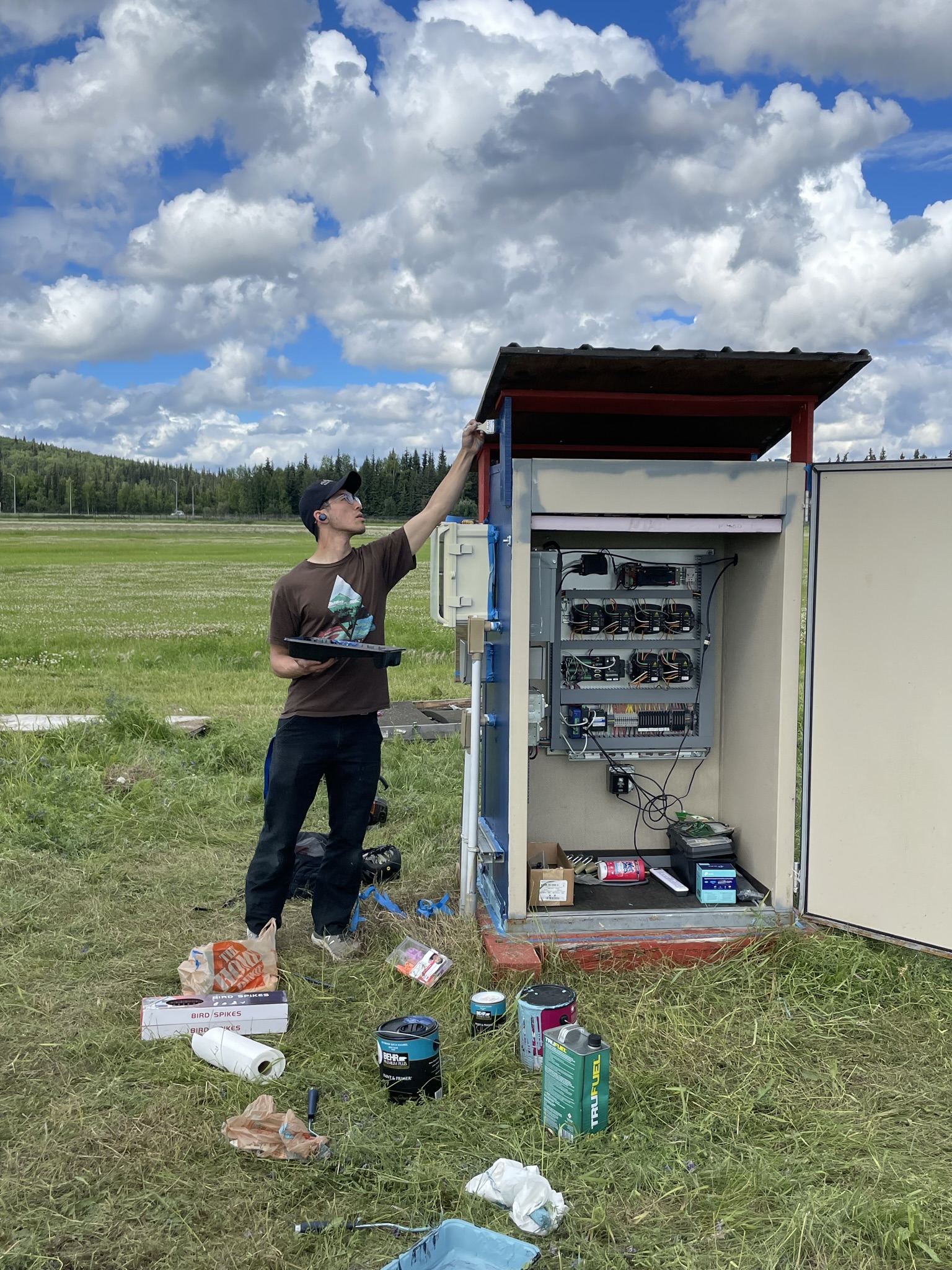Partnerships and Maintenance Keep Solar Site Shining

A key tool in the ACEP Solar Technology Program’s high-latitude cold-climate solar research is the UAF Solar Photovoltaic Test Site on UAF’s Fairbanks campus. This site has been operating for four years collecting data from south-facing monofacial and bifacial panels, east and west-facing bifacial panels, and an adjacent high-end meteorological station collecting local weather conditions.
To keep ACEP’s solar test site functioning and producing valuable solar photovoltaic production data in northern latitudes, ACEP intern Cole Sudkamp-Walker, along with ACEP personnel, recently coordinated and conducted extensive maintenance at the site. Some of the environmental challenges the test site endures are plant overgrowth, bird guano and strong weather events. Steps were taken to improve conditions at the test site to keep it functioning at its full potential.
To reduce interference from overgrown plants, vegetation was trimmed and weed-blocking fabric was laid down under and around the meteorological station.
An increase in bird droppings has been observed on some of the PV modules and reference cells, which are designed to measure the amount of light incident on the PV modules that can be used for conversion into electricity. To ensure quality reference data is collected, these cells need to be kept free of dirt and debris.
The birds, while posing a minor nuisance to the solar research, are part of a research project being conducted in the UAF Experimental Farm’s west field next to the solar site by Tricia Blake of the Alaska Songbird Institute. To prevent interfering with Blake’s research, Sudkamp-Walker collaborated with Blake to come up with a solution that would deter the birds from pooping on the solar panels while not deterring them from the bird boxes where they are counted. It was determined that bird spikes would be the best option for all parties. Bird spikes make it unappealing for birds to sit or stand on a surface, therefore reducing the potential for more additional guano on the panels.
And finally, a new information sign, designed by ACEP intern Mori Hays, with a QR code leading to additional ACEP solar research information, was installed to inform visitors about the purpose of the site. The solar site sits next to a community trail that many walkers, cyclists and skiers use year-round, and educating the community about renewable energy is an important part of the ACEP mission.
For more the solar test site or ACEP’s solar research, please visit /solar.
ACEP undergraduate student intern Mori Hays paints the electrical box at ACEP’s Solar Photovoltaic Test Site. Photo by Cole Sudkamp-Walker.


